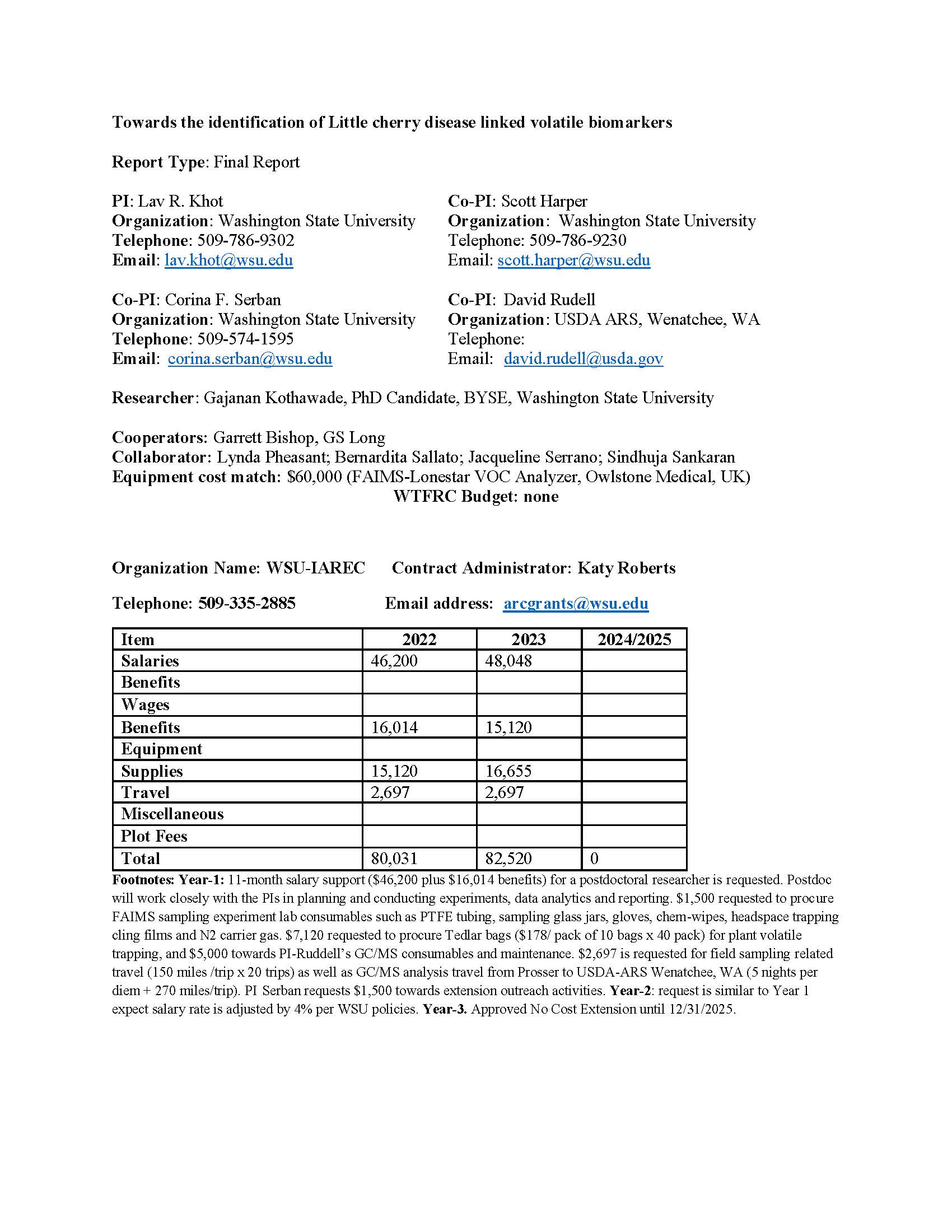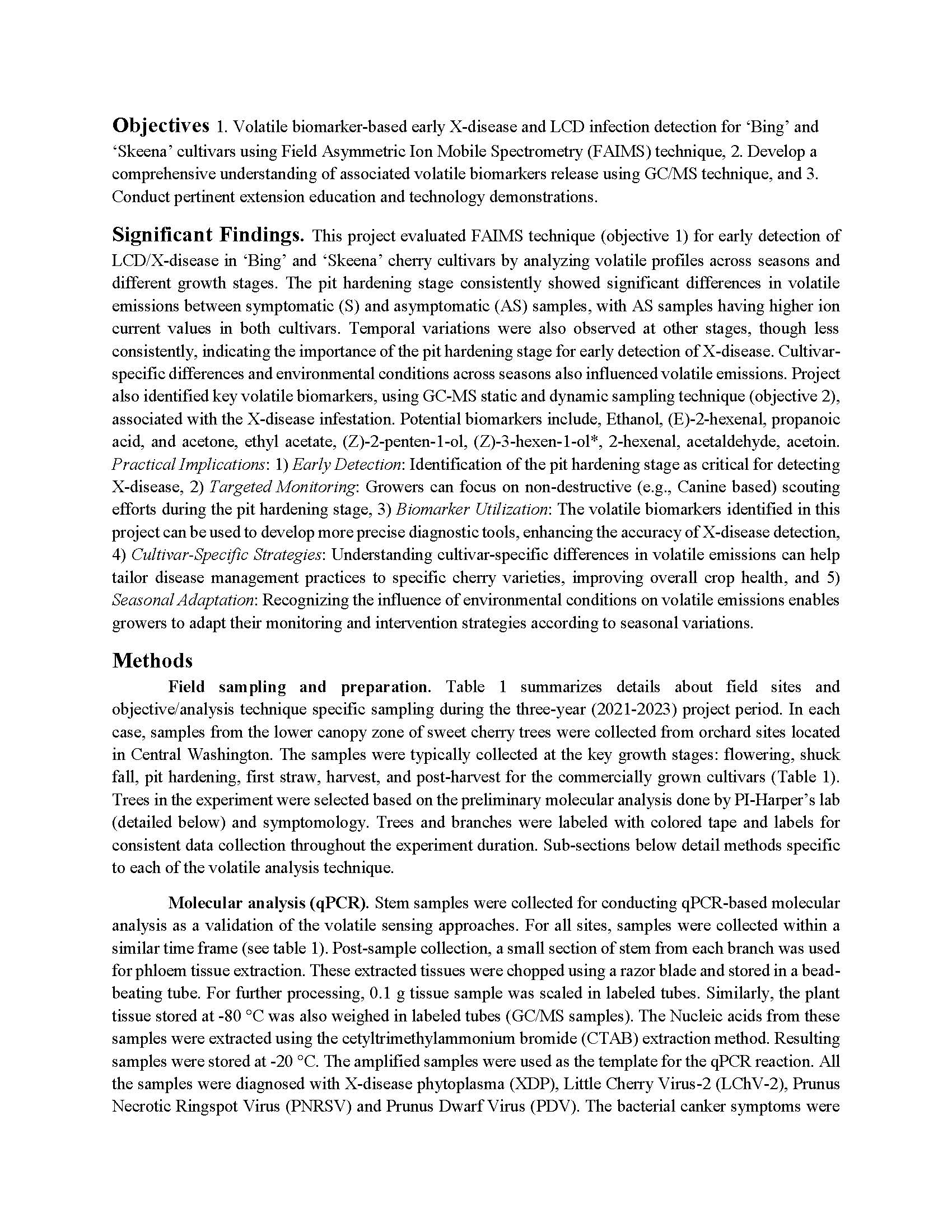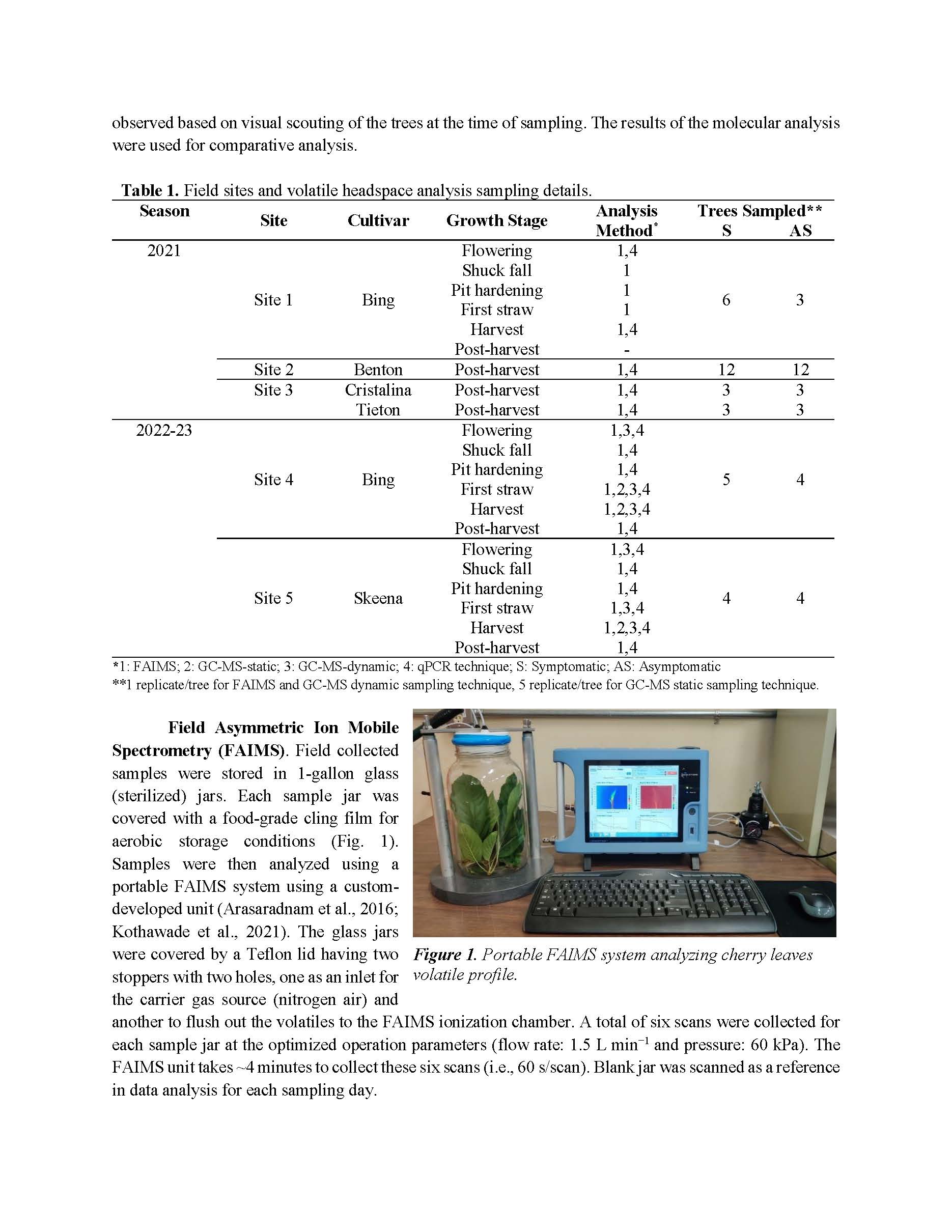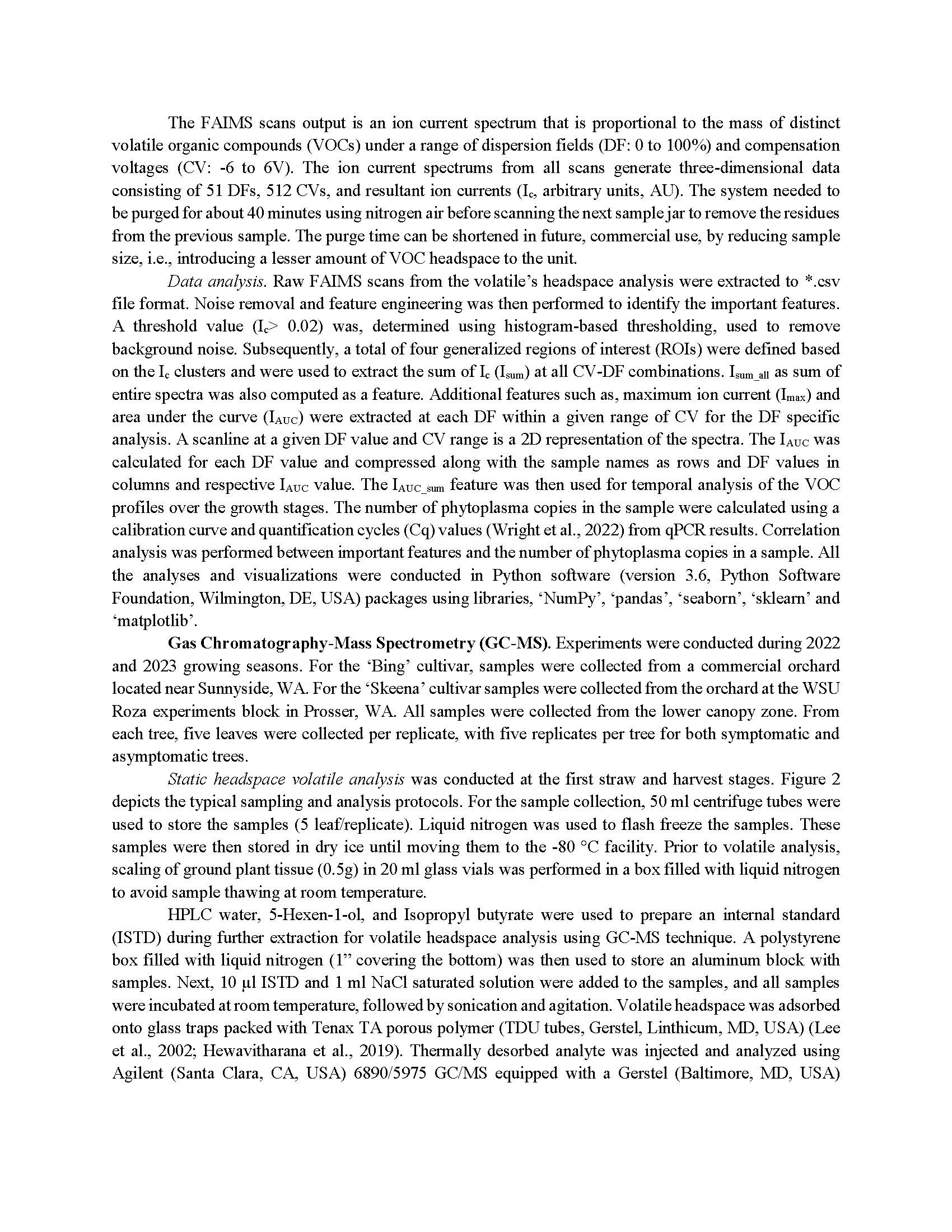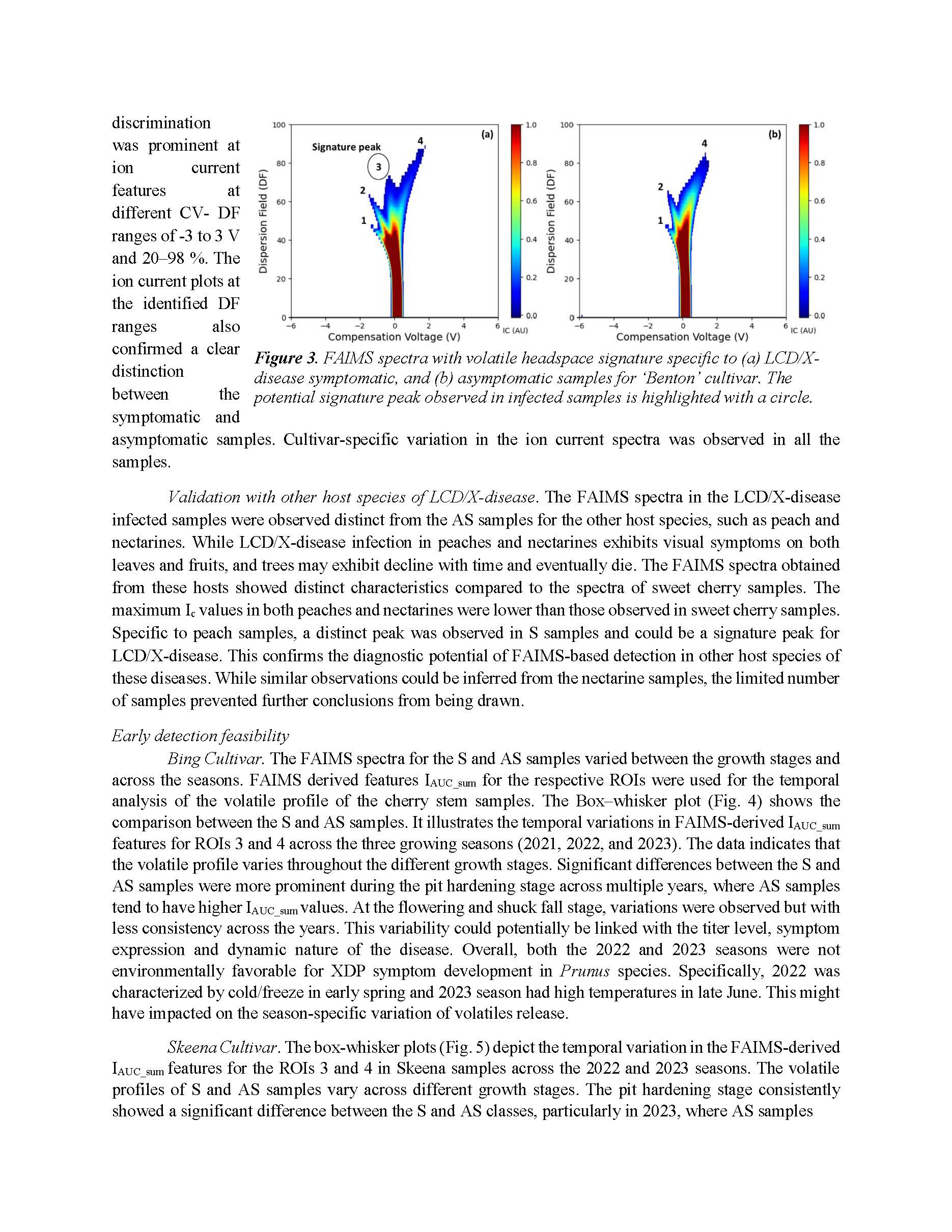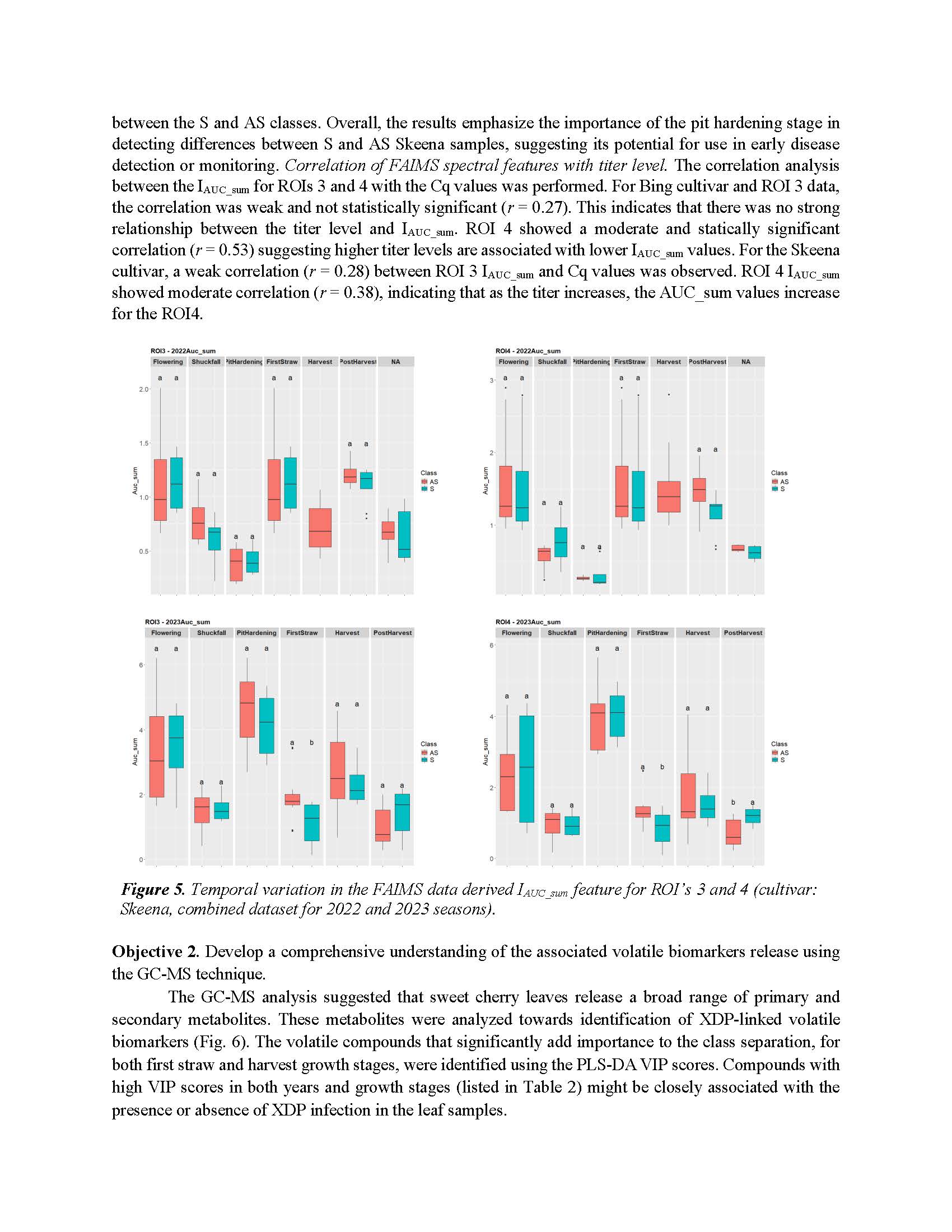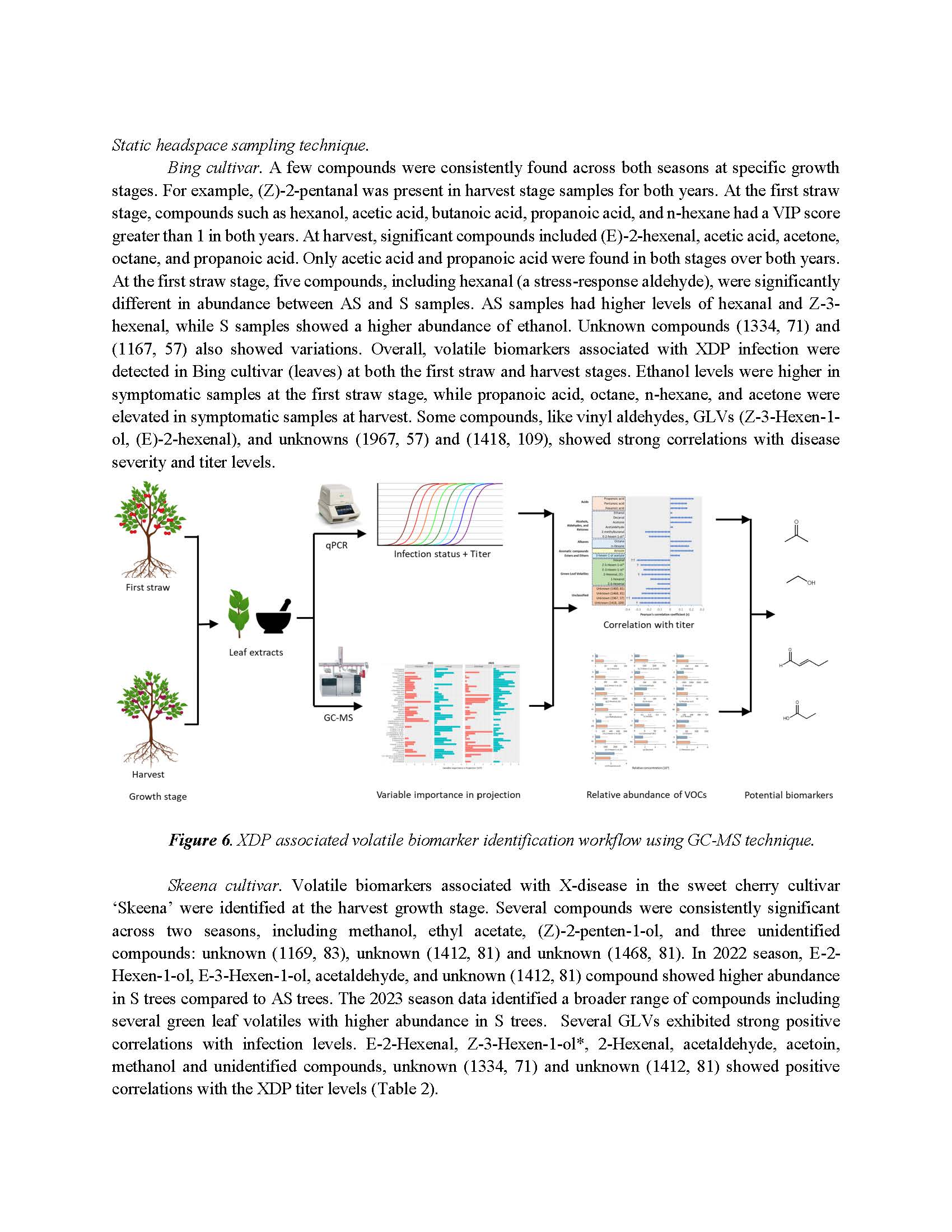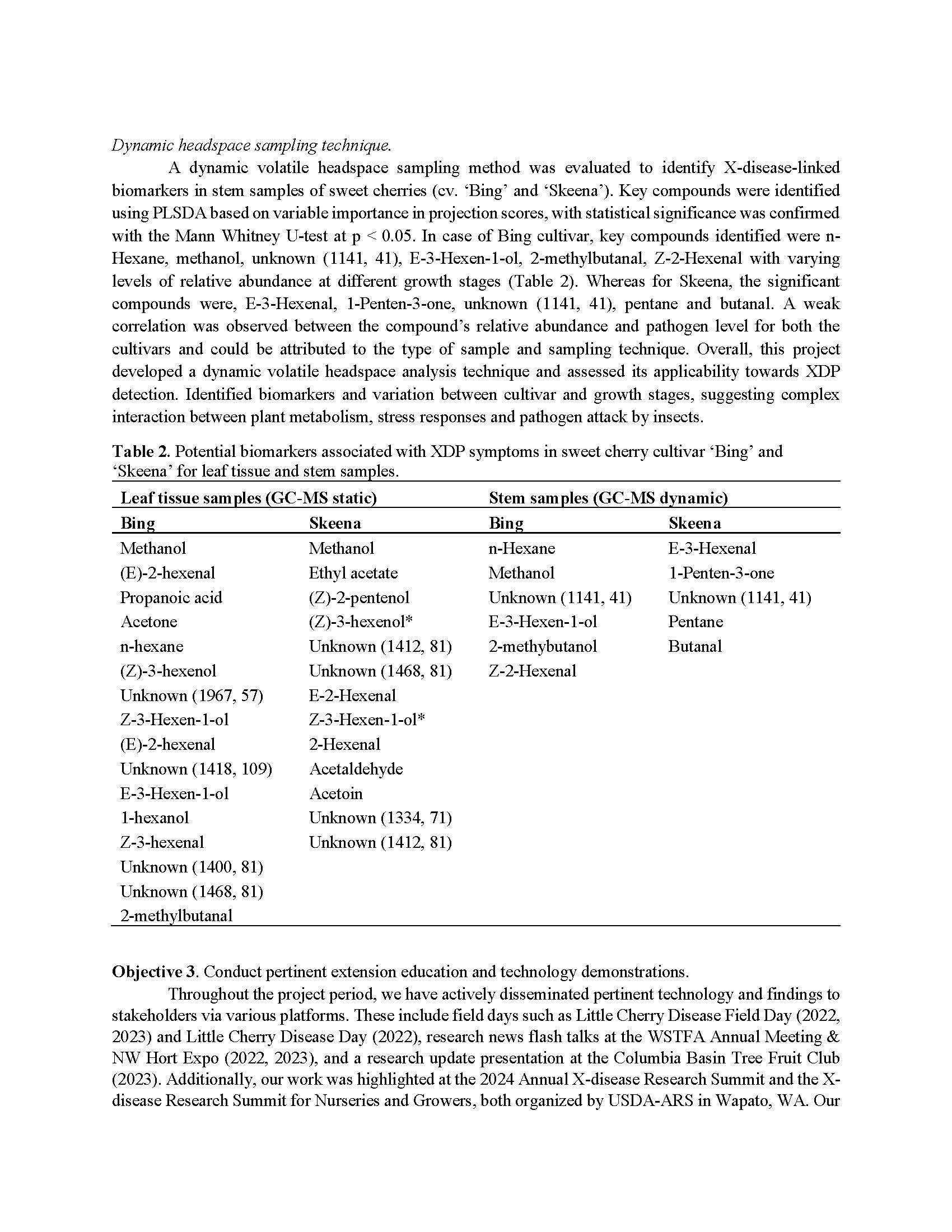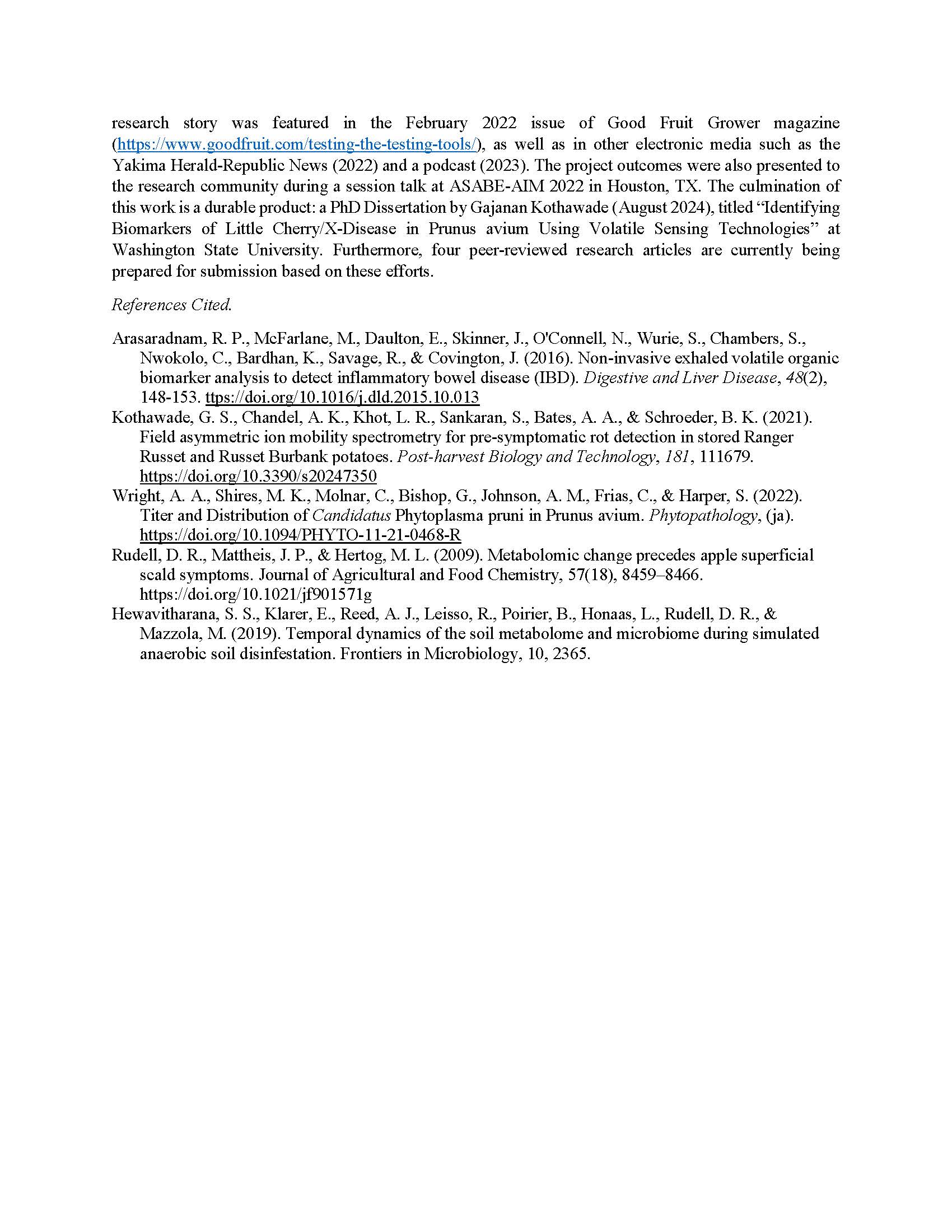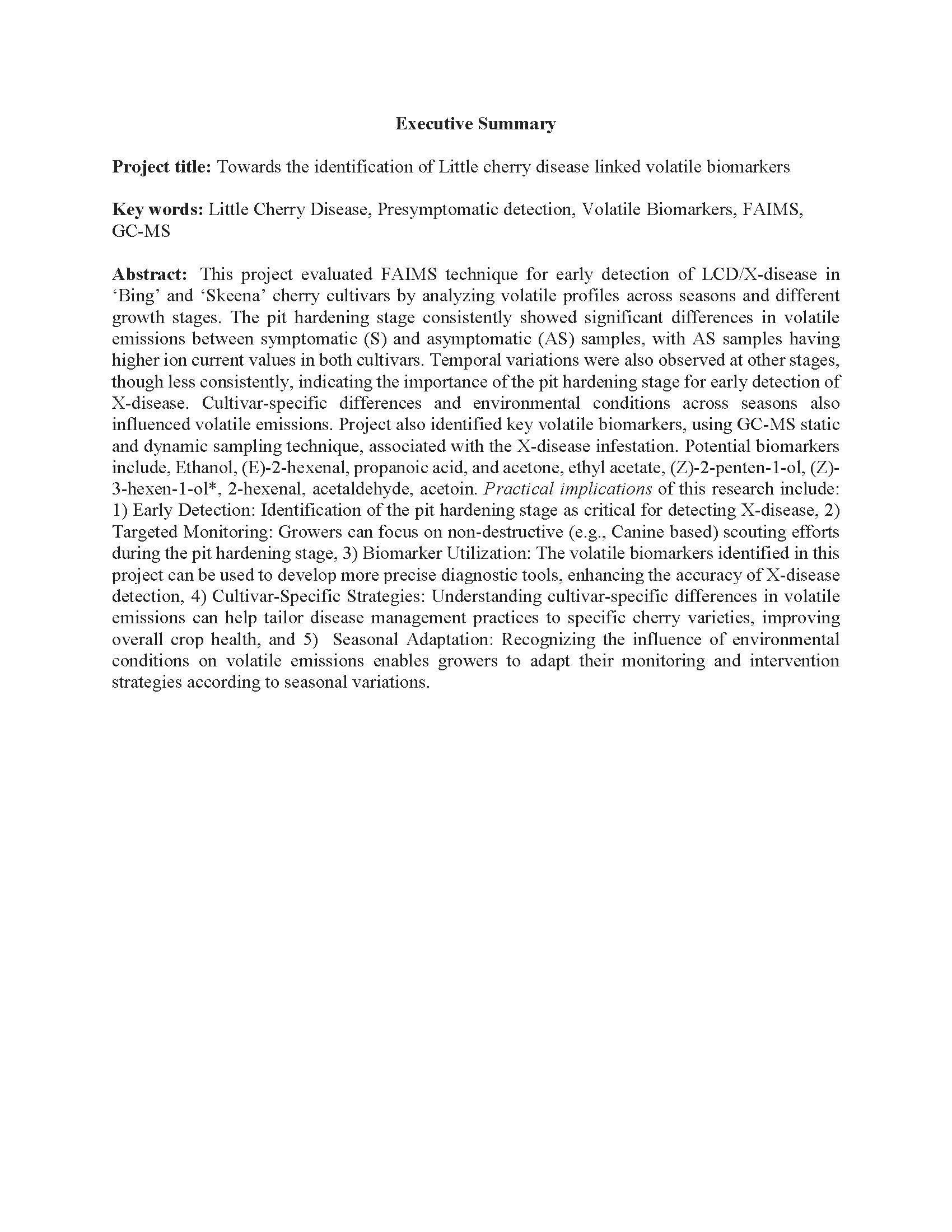Towards the identification of Little cherry disease linked volatile biomarkers
Author: Lav R. Khot
Published: 2025
Summary: Abstract: This project evaluated FAIMS technique for early detection of LCD/X-disease in ‘Bing’ and ‘Skeena’ cherry cultivars by analyzing volatile profiles across seasons and different growth stages. The pit hardening stage consistently showed significant differences in volatile emissions between symptomatic (S) and asymptomatic (AS) samples, with AS samples having higher ion current values in both cultivars. Temporal variations were also observed at other stages, though less consistently, indicating the importance of the pit hardening stage for early detection of X-disease. Cultivar-specific differences and environmental conditions across seasons also influenced volatile emissions. Project also identified key volatile biomarkers, using GC-MS static and dynamic sampling technique, associated with the X-disease infestation. Potential biomarkers include, Ethanol, (E)-2-hexenal, propanoic acid, and acetone, ethyl acetate, (Z)-2-penten-1-ol, (Z)-3-hexen-1-ol*, 2-hexenal, acetaldehyde, acetoin. Practical implications of this research include: 1) Early Detection: Identification of the pit hardening stage as critical for detecting X-disease, 2) Targeted Monitoring: Growers can focus on non-destructive (e.g., Canine based) scouting efforts during the pit hardening stage, 3) Biomarker Utilization: The volatile biomarkers identified in this project can be used to develop more precise diagnostic tools, enhancing the accuracy of X-disease detection, 4) Cultivar-Specific Strategies: Understanding cultivar-specific differences in volatile emissions can help tailor disease management practices to specific cherry varieties, improving overall crop health, and 5) Seasonal Adaptation: Recognizing the influence of environmental conditions on volatile emissions enables growers to adapt their monitoring and intervention strategies according to seasonal variations.
Keywords:

